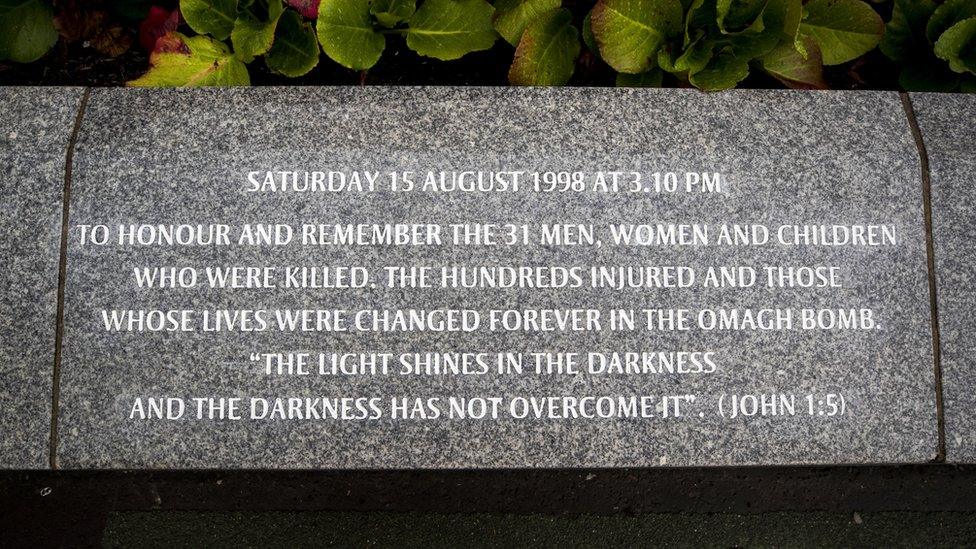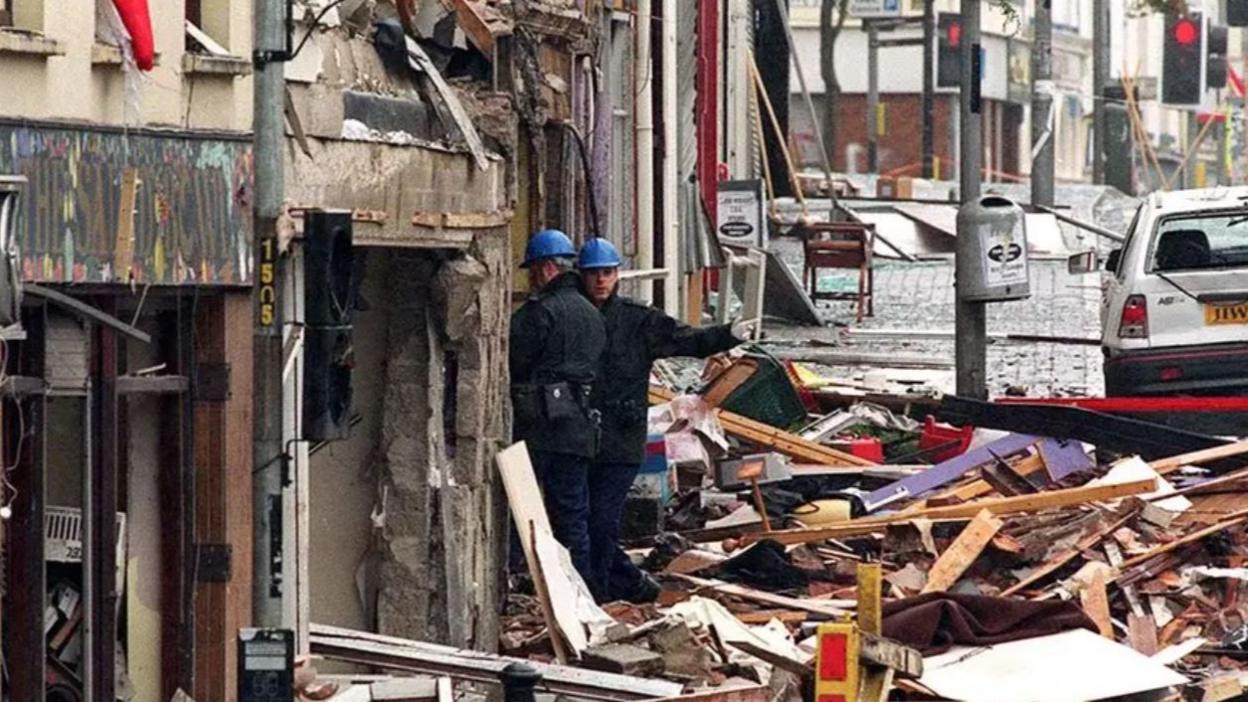Bomb changed my life forever, survivor says
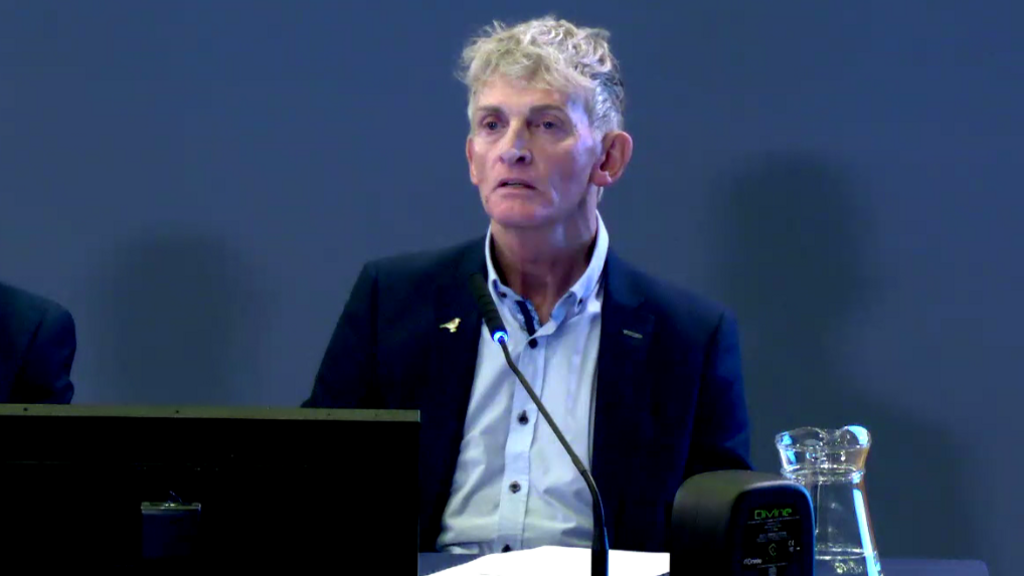
Rodney Patterson was in Omagh town centre when the bomb went off in August 1998
- Published
A man who survived the Omagh bomb said the attack changed his life forever.
Rodney Patterson had travelled to the County Tyrone town to buy a bike and get his hair cut when the attack took place in August 1998.
His evidence was being heard at the inquiry into the Real IRA bombing, which killed 29 people, including a woman who was pregnant with twins.
The Omagh Bombing Inquiry concluded the commemorative and personal statement hearings on Wednesday, and will resume in Omagh during the week commencing 23 June.
The next stage of the inquiry will hear opening statements from the core participants including the UK Government, police and security services.
On Wednesday, barrister Paul Greaney KC said the inquiry hoped to sign a memorandum of understanding over the disclosure of Irish state materials in March.
Warning: This page contains distressing details
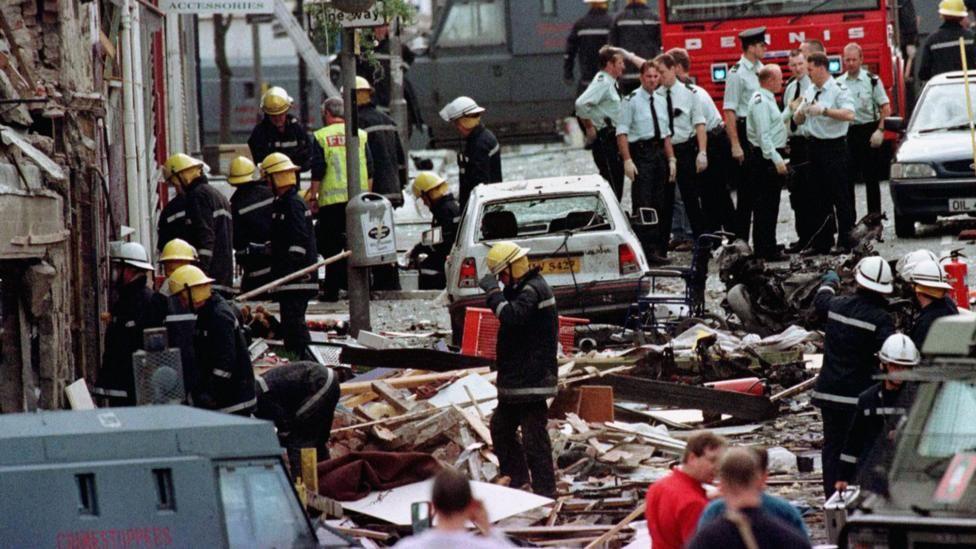
The explosion killed 29 people, including a woman pregnant with twins
Speaking on Wednesday, Mr Patterson said when the bomb exploded, it seemed to "suck all the oxygen out of my body".
He told the inquiry that after the explosion he took his hands away from his eyes and what he saw was "like a different world".
He said it was jet back with debris everywhere and people lying at different angles.
"I couldn't take it in. I was just in so much shock and disbelief," he said.
Mr Patterson said his life had been changed forever by the bomb.
He retired at the age of 55 and found it difficult to be in crowds.
"Every bit of it is as a result of the bomb," he said.
"I couldn't sit in a restaurant unless it was near a door or the corner of the restaurant where you could get away," he said.
Listening to the testimony of other survivors and giving evidence to the public inquiry, he said, had been the hardest thing he had ever done.
"It was horrendous," he said.
"I listened to the stories and took every word."
He added that giving evidence had been a positive experience and the help of psychiatrists and counsellors, including the WAVE trauma centre, had made him stronger.
"I never knew this was going to happen. I never thought I would see this day," he said.
"I think it has just been a long time coming, maybe too long, but maybe it's never too late."
'Haunts me to this day'
Earlier, the inquiry heard from Simon McLarnon who heard the explosion from his house and went to the scene.
He was a community dental officer and had first aid training, but he said he felt "useless".
Mr McLarnon said he continued to feel guilt that he was unable to put his training to use on the day.
He checked the pulse of one young boy and realised "there was nothing there".
"That's the first time I'd ever done that in my life - that was hard to deal with," he said.
"I remember the look on his face as well. It haunts me to this day."
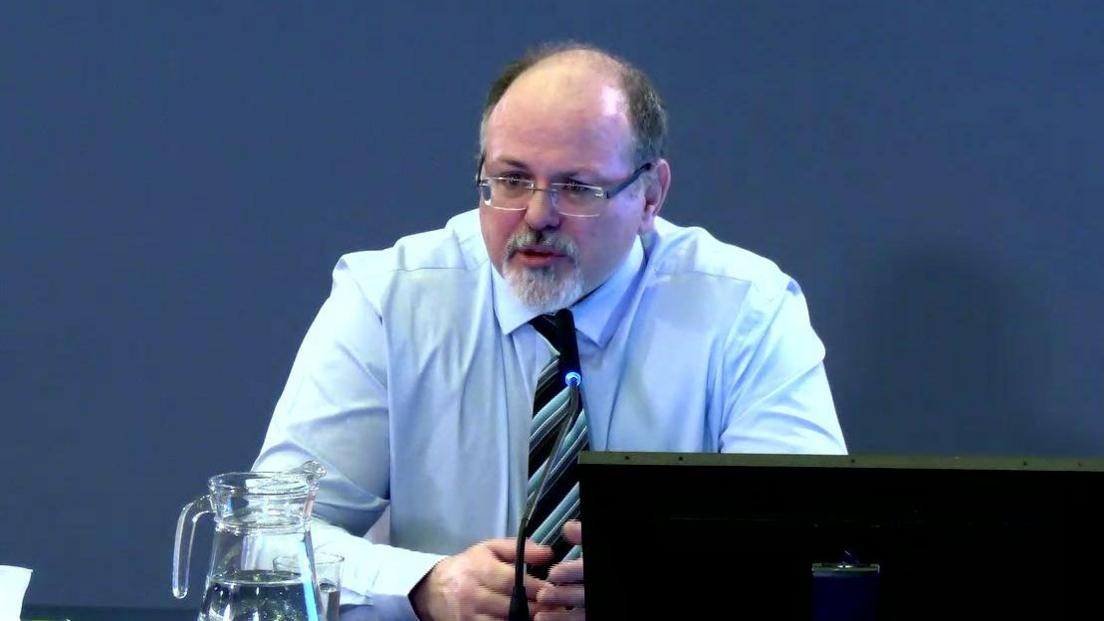
Mr McLarnon heard the explosion from his house
Mr McLarnon said he spoke to a man recording the scene with a camcorder.
"I looked into his camera and told him to go down the street and record exactly what happened, so the world could see what these people had done to us," he said.
He also met a neighbour who had been planning to film his children taking part in a community parade.
"He was shaking, he was very shocked," Mr McLarnon said.
"He described that when he realised how bad it was he couldn't even look into the camera.
"He more or less just held it and pointed it."
Video footage
Mr McLarnon said his neighbour filmed him going around from one victim to another.
His neighbour talked about destroying the film as he said you couldn't show what was on the camera.
"We told him: 'No, no, this could be very, very important both to show people what happened and also for evidence for the police'."
He said that is the footage you see now of the Omagh atrocity.
He told the inquiry he felt an enduring sense of injustice that those who were responsible for planning and carrying out the atrocity had never been brought to justice.
"I don't understand if you knew that you neighbour, brother, husband was involved in this you wouldn't go to the police or the Garda (Irish police)," he said.
"That hasn't happened. I found that difficult to understand and accept."
Survivor says 'world stood still' after bomb went off
- Published13 February
Family 'woefully let down' by police investigation
- Published17 February
The inquiry also heard from Mary McGovern, who was injured in the bombing.
She said her trust for a peaceful and safe society in Northern Ireland left that day.
Ms McGovern was working in a bakery while studying for a master's degree and knew several of the people who were killed.
She recalled a "ferocious gust of wind" and "unmerciful noise" when the bomb exploded.
She suffered a leg wound from a lump of metal which she believes was a part of the car that contained the bomb.
'Lucky to be alive'
She said she was plagued with guilt for surviving.
"People were always kind, but I felt pity from people but also I knew that I was lucky to be alive," she added.
"It is a fine line between sadness and happiness to be alive."
Despite loving her hometown of Omagh and the people who live there, she said she knew she could never live in Northern Ireland and moved with her family to Australia.
'A war zone'
Anne Cullen, a taxi driver, went to the town centre after the explosion as she had first aid training.
She told the inquiry she saw the body of a woman lying in the rubble.
"She looked like she was sleeping but I realised she was dead," she said.
"However as she lay there she looked like a princess.
"Omagh was like a war zone that day, I will never forget it."
'I knew it was bad'
A statement was read out from Helen Kerr, who was in the town with her 15-year-old daughter to buy a school uniform for the new term.
They were inside a coffee shop when the car bomb exploded outside, showering them with glass.
She said the noise of the bomb was tremendous but the screaming "was much worse".
She was horrified by the sight of people "running, screaming, looking for friends" and bodies lying in the street.
"The sights and sounds still remain with me today and I knew it was bad," she said.
She said her daughter knew some of the young people who were killed and would not talk about what happened.
In the months after the bombing, Ms Kerr said she jumped at every, noise while her daughter suffered from panic attacks and was frightened by everything.
Timeline of events
Wednesday was the final day of commemorative hearings.
For the past four weeks the inquiry, in the Strule Arts Centre in the town, has been hearing evidence from victims' families, as well as survivors and those who helped in the aftermath of the atrocity.
It is an independent statutory inquiry which has been asked to consider whether the bomb "could have reasonably been prevented"., external
At this phase in the inquiry, those who lost their lives in the bombing have been remembered.
The inquiry has also been hearing from people injured in the atrocity, and members of the emergency services who went to the bomb scene.
These hearings have allowed the chairman, Lord Turnbull, to hear directly from those most affected by the bombing.
'Many tears have been shed'
Counsel to the inquiry Mr Greaney said the evidence had been painful and many tears had been shed, but victims and survivors had been placed at the heart of the process.
"We said we intended to commemorate publicly each person who was murdered in the bombing and then hear the personal statements of those who are injured or otherwise directly affected by the attack," he said.
"We said that we wanted to shine a bright light on the terrible consequences of the Omagh bombing and to understand the impact on both individuals and the community.
"We hope and we believe that aim has been accomplished."
He said the inquiry had learned of the "enduring strength of the community here in Omagh" but he recognised the hearings had been painful for people.
"Many tears have been shed, some inside this hearing room and some outside," he said.
What was the Omagh bomb?
The bomb that devastated Omagh town centre in August 1998 was the biggest single atrocity in the history of the Troubles in Northern Ireland.
It came less than three months after the people of Northern Ireland had voted yes to the Good Friday Agreement.
Who carried out the Omagh bombing?
Three days after the attack, the Real IRA released a statement claiming responsibility for the explosion.
It apologised to "civilian" victims and said its targets had been commercial.
Almost 27 years on, no-one has been convicted of carrying out the murders by a criminal court.
In 2009, a judge ruled that four men - Michael McKevitt, Liam Campbell, Colm Murphy and Seamus Daly were all liable for the Omagh bomb.
The four men were ordered to pay a total of £1.6m in damages to the relatives, but appeals against the ruling delayed the compensation process.
A fifth man, Seamus McKenna, was acquitted in the civil action and later died in a roofing accident in 2013.
The public inquiry
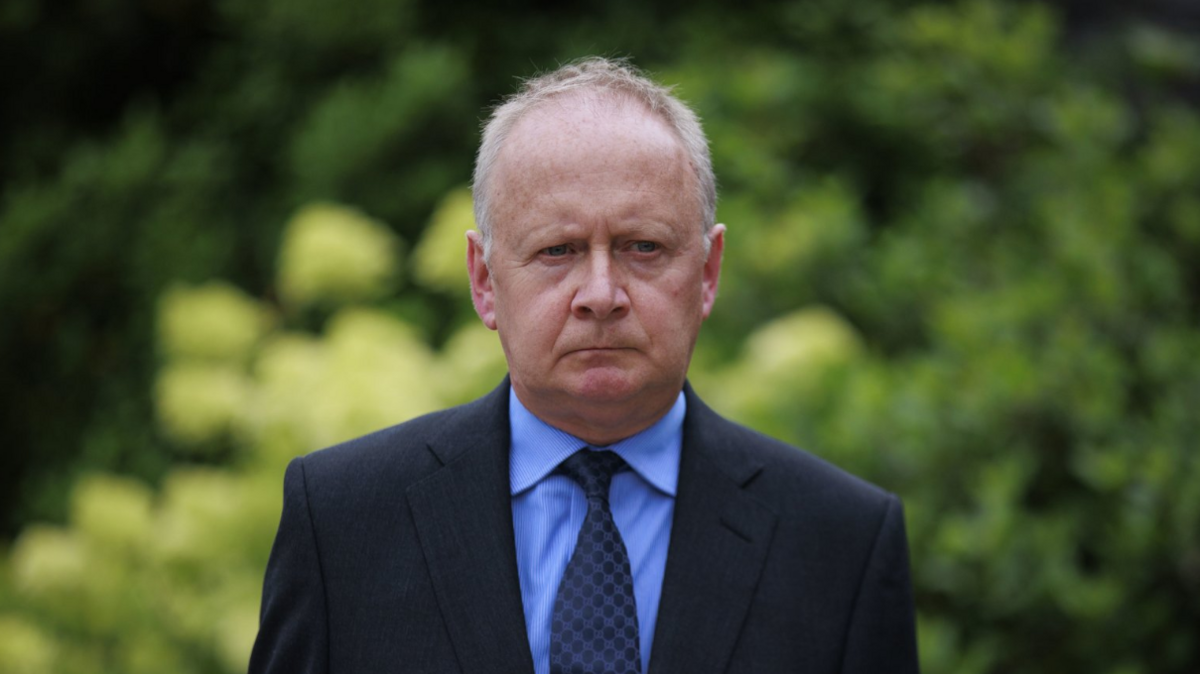
Lord Turnbull is chairing the public inquiry
After years of campaigning by relatives, the public inquiry was established to examine if the Real IRA attack could have been prevented by UK authorities.
This phase of the inquiry was to hear powerful individual testimonies from relatives who lost loved ones in the explosion.
The bombers planned and launched the attack from the Republic of Ireland and the Irish government has promised to co-operate with the inquiry.
However, the victims' relatives wanted the Irish government to order its own separate public inquiry.
Dublin previously indicated there was no new evidence to merit such a move.
On Wednesday Mr Greaney said members of the inquiry team had met officials from the Irish government on several occasions, most recently on 5 February.
He said it was their belief that the outstanding issues over disclosing information had narrowed.
He said they were waiting for a substantive response but it was understood a memorandum would be signed in March subject to the approval of the Irish government
The inquiry cannot compel anyone from outside the UK to give evidence.
- Published28 January
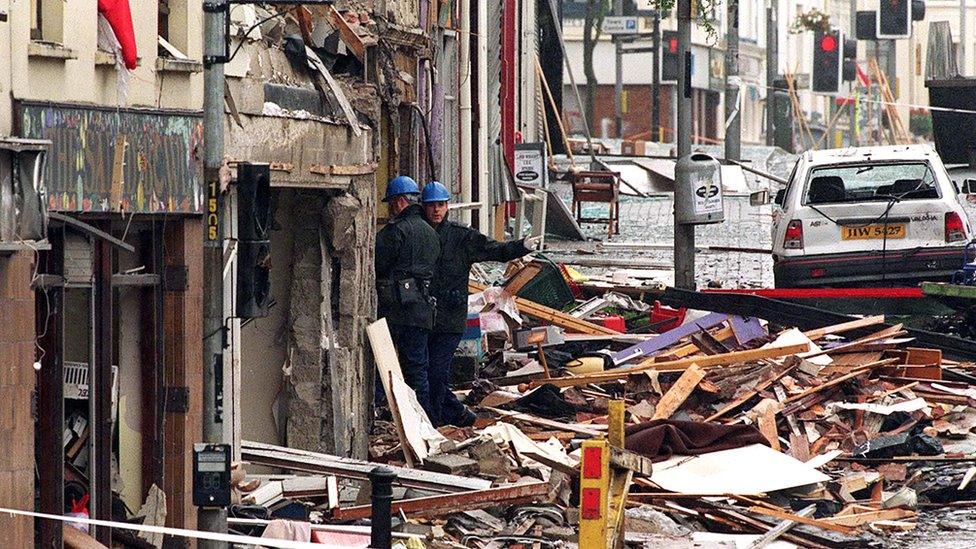
- Published28 January
